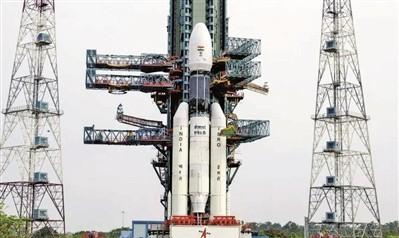
Indian-made GSLV Mark III launch vehicle.
According to Indian media reports, India's Minister of Atomic Energy and Space Development, Jitendra Singh, recently announced that India will build its first space station in 2030. However, some analysts believe that it is difficult for India to achieve this goal.
There is a saying in the space industry: how big the carrying capacity is, how big the space stage is. Although the construction of the space station can take the form of multiple launches and on-orbit assembly, large launch vehicles are indispensable for some high-value payloads. At present, there are 4 countries and regions in the world that can transport a one-time payload of about 20 tons to low Earth orbit, namely the United States, Russia, China and the European Space Agency. India's current largest launch capacity rocket is the GSLV Mark III carrier rocket, which has a low-Earth orbit carrying capacity of about 8.5 tons, which is obviously insufficient for launching the space station. If India wants to develop a rocket with a carrying capacity of about 20 tons, it will take at least 10 years. At present, India has not announced the development plan of such rockets. The analysis believes that India may adopt multiple launches and on-orbit assembly to build the space station.
Manned space technology represents the peak of a country's space technology level, and at present, only the United States, Russia and China in the world can independently send astronauts into space. India's manned spaceflight started early, initially seeking cooperation with the Soviet Union and Russia, and after 2010 embarked on its own research and development path. On December 18, 2014, India conducted its first unmanned space capsule flight test, sending the spacecraft's return module weighing about 3 tons into suborbital orbit and successfully recovering it. On July 5, 2018, India conducted the spacecraft escape tower test and the return capsule main parachute opening test and succeeded. After Modi came to power, India officially launched the "Gaganyan" program, with the goal of building a manned spacecraft similar to Russia's "Soyuz". The Gaganyan program was originally intended to conduct two unmanned launch tests at the end of 2020 and 2022, and the first manned launch test in 2023. However, due to the impact of the new crown pneumonia epidemic and other factors, the first launch of the "Gaganjan" spacecraft may be postponed to 2024. Even if the first launch is successful, it is estimated that it will not be 2028 until 2028 for true manned flight. In this way, India has difficulties in building a space station in 2030.
At present, due to the impact of the new crown pneumonia epidemic, many employees of the Indian Space Research Organization are quarantined at home, and the travel of foreign experts to India has been postponed again and again, which has a certain impact on the advancement of its related projects. In addition, a series of tests conducted in the early stage of India are mostly demonstration verification, and there is a certain gap from the real flight environment. At the same time, India does not have the training capacity for astronauts and needs to cooperate with Russia. All these directly test India's space management capabilities and levels.
In fact, India is subject to various factors such as system and economy, and its space development plan has been changed several times, and the development progress has been postponed many times. Despite some progress, there is probably still a long way to go to build a space station by 2030.
Source: China National Defense Daily